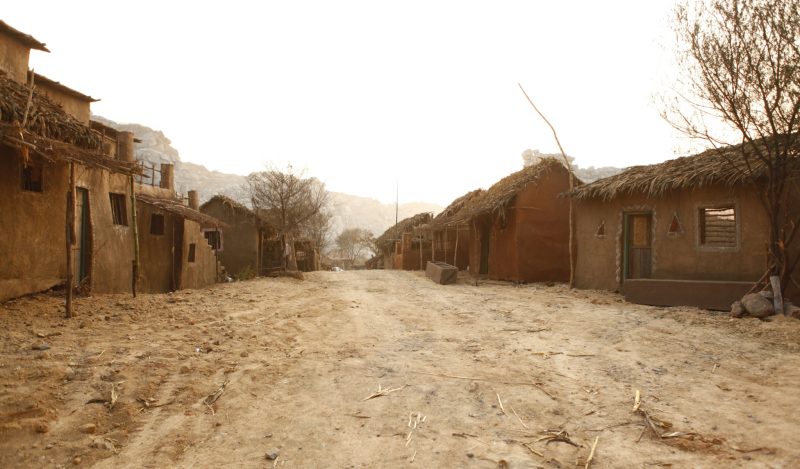So you’re going to the beach this summer, but have already finished the light and airy Fear of a Microbial Planet (why haven’t you left a review, by the way?), and for some strange reason you haven’t had your fill of fear and germs, so you are wondering what else to read.
If this applies to you, I have suggestions! While writing FMP, I read dozens of books and hundreds of articles, many that greatly influenced the final product. Some books influenced my writing more than others, and I’ve decided to share with you a list of some of the more influential titles. It would take too long to rank them, so here they are in no particular order, with an explanation of why I found each to be valuable.
- The Great Influenza. John Barry. 2004. First published in 2004, this comprehensive account of the 1918 “Spanish” influenza pandemic covers all the bases from the history of germ theory to the long-lasting legacy of the worst pandemic in history. Even more interesting are Barry’s afterword sections, which have been continuously updated. In earlier iterations, up to the centennial 2018 version, Barry’s afterword made it clear that he believed that the “virus had its way” and that no amount of isolation or masking could stop the inevitable viral spread. People simply could not function sustainably in the complete absence of human interaction. However, the COVID-19 pandemic made Barry abandon these beliefs, because as I mentioned in Fear of a Microbial Planet, he recalled lockdown and mask-mandate proponents changed his mind with early pandemic response email threads. He has since written a COVID-related afterword which I’m sure reflects this reversal. Unfortunately, he was right the first time.
- Spillover. David Quammen. 2012. Two thousand twelve was a good year for books, as you will see in the rest of my list. In Spillover, David Quammen explains how infectious diseases jump from animals to humans, and how increased ecological disruption might make spillover events more frequent. Quammen gives a history of the biggest and also the most recent spillovers, including HIV, SARS1, and Nipah Virus, and also explains why some more common zoonotic diseases, such as Lyme disease, can increase. I used much of his discussions of bats and birds as hosts for potentially zoonotic viruses as source material. Quammen also profiles virus hunters that have attempted to identify animal viruses with pandemic potential, and identifies Peter Daszak of Ecohealth Alliance as part of that effort. Like Barry, Quammen may have become too close to his sources to be skeptical of their motives. According to reviewer Nicholas Wade of City Journal, Quammen’s new book Breathless makes no attempt to ask tough questions of Daszak or anyone else about gain-of-function research and the possibility of a lab-leak origin for SARS-CoV-2, further suggesting that his new book should be categorized as “a work of advocacy, not reporting.”
- 10% Human. Alanna Collen. 2012. Although a bit dated, Alanna Collen’s book 10% Human remains an excellent primer on microbiome research at a time when interest in the field and its potential applications were exploding.
- An Epidemic of Absence. Moises Velasquez-Manoff. 2012. An Epidemic of Absence was also published at the height of the excitement over the potential of microbiome therapy for a variety of diseases. Since that time, many proposed therapies didn’t prove effective in clinical trials. If anything, the book is another example of how a burgeoning field gets a lot of hype and attention, then gets brought down to reality over time. There is still great potential for microbiome-modulating therapies, but, as with pretty much everything, the reality is much more complicated than the dream. A similar example would be the Human Genome Project, and although the accomplishment was an impressive human feat, the project resulted in more questions than answers. Many potential gene-based therapies didn’t pan out, complicated by then unknown factors such as epigenetic regulation.
- How Fear Works. Frank Furedi. 2018. Although I interviewed sociologist Frank Furedi for my book, everything I used in FMP was sourced from How Fear Works. His thorough exploration of how fear of even everyday occurrences has resulted in a society incapable of accepting even slight risks, while risk avoidance has become a major virtue and risk acceptance a luxury of the reckless, was fascinating. If this sounds like how the West responded to COVID, that’s how I interpreted it too, and as a result, I found Furedi’s views on fear immensely valuable.
- The Psychology of Pandemics. Steven Taylor. 2019. I’m not a psychologist, but I find psychology fascinating and knew that any attempts to explain how we arrived at a germophobic safety culture was going to involve some deep dives. Fortunately, The Psychology of Pandemics, published right before COVID-19, was a timely resource, as was Steven Taylor’s 2022 review article of the same title, which included relevant COVID-updates. I especially like his terms monitors and blunters; the former indicated people that constantly monitor news for updated information, with the latter rejecting much of the messaging as fear porn. In FMP, I write that monitors can become maximizers and blunters can become minimizers when it comes to evaluating and communicating risk.
- Pandemics and Society. Frank Snowden. 2020. Snowden’s book contains comprehensive historical accounts of all the major pandemics throughout history. The most interesting part was his discussion of governments using pandemic mitigation in service of power grabs, and I couldn’t resist quoting it in FMP:
When new, virulent, and poorly understood epidemic diseases emerged, such as cholera and HIV/AIDS, the first reaction was to turn to the same defenses that appeared to have worked so effectively against plague. It was unfortunate that antiplague measures, however, successfully deployed against bubonic plague, proved to be useless or even counterproductive when used against infections with profoundly different modes of transmission. In this manner the plague regulations established a style of public health that remained a permanent temptation, partly because they were thought to have worked in the past and because, in a time of uncertainty and fear, they provided the reassuring sense of being able to do something. In addition, they conferred upon authorities the legitimating appearance of acting resolutely, knowledgeably, and in accord with precedent.
Plague restrictions also cast a long shadow over political history. They marked a vast extension of state power into spheres of human life that had never before been subject to political authority. One reason for the temptation in later periods to resort to plague regulations was precisely that they provided justification for the extension of power, whether invoked against plague or, later, against cholera and other disease. They justified control over the economy and movement of people; they authorized surveillance and forcible detention; and they sanctioned the invasion of homes and the extinction of civil liberties.
Now replace plague with COVID, and it’s still accurate. - Plagues Upon the Earth. Kyle Harper. 2021. My favorite part of Harper’s book is his quotations from The Diary of Samuel Pepys, where Pepys describes the wholly unsanitary existence of 17th century England. Here’s my version from FMP:
The diary of Samuel Pepys, an intellectual, government administrator, and president of the Royal Society of London, one of the first organizations to discuss and publish the results of scientific studies, provides an unsanitized (pun-intended) picture of the filthy world of London earlier in the seventeenth century. What his diary did not contain was evidence that he ever took a bath, as suggested by frequent complaining of body lice and descriptions of the accumulation of other filth on his body. Instead, his candid accounts detailed eating fish with worms and awakening in the night with food poisoning, culminating in an unsuccessful mad dash to find a chamber pot, whereupon he “was forced…to rise and shit in the Chimny twice; and so to bed was very well again.” Cellars between neighbors were often shared and could result in seepage and flow of sewage between houses. When Pepys went down to his cellar one morning, he recalled, “I put my foot into a great heap of turds, by which I find that Mr. Turner’s house of office is full and comes into my cellar, which doth trouble me.” I suspect anyone would say that a cellar filled with a neighbor’s feces had doth troubled them, too. - The Medical Detective. Sandra Hempel. 2007. The first epidemiologist, John Snow, was not well-received by the “experts” of his time. That’s because his discovery of the Broad Street pump as a source of cholera transmission didn’t fit in with the prevailing miasma theory, which instead attributed disease to exposure to noxious gases. As I further explain in FMP:
Snow later came to the defense of ‘nuisance trades’ that produced noxious gases such as abbatoirs, tanneries, bone-boilers, soap manufacturer, tallow melters, and makers of chemical fertilizers. He explained his reasoning–that if the noxious odors produced by these manufacturers were “not injurious to those actually on the spot where the trades are carried on, it is impossible they should be to persons further removed from the spot.”
The medical journal the Lancet displayed nothing but contempt for Snow’s efforts, painting the manufacturers’ lobby as pro-miasma and accusing Snow of spreading misinformation: “The fact that the well whence Dr. Snow draws all sanitary truth is the main sewer.”
More than a hundred years later, the Lancet published the COVID immunity-denying John Snow Memo that attacked the Great Barrington Declaration, which has since been completely validated by events. It is unlikely that the JSM authors or anyone at the Lancet noticed the historical irony. - The Myth of Heterosexual AIDS. Michael Fumento. 1990. Reading this book is going back in time more than 30 years and realizing just how similar the response to the HIV pandemic was similar to the SARS-CoV-2 pandemic. AIDS was a disease with very specific high-risk groups, yet for fame-seeking scientists, public health officials, journalists and celebrities, that wasn’t enough. Everyone needed to be scared for maximum benefit, and their efforts were highly successful. Exactly what happened with COVID and low-risk children decades later, with many of the same players.
- The Coddling of the American Mind. Jonathan Haidt and Greg Lukianoff. 2018. I could’ve called Fear of a Microbial Planet The Coddling of the American Immune System, because it’s not just snowflake college students that can’t handle any challenges. The benefits of our sanitized world also come with important trade-offs for our health. In the book, Haidt and Lukianoff use the immune system as an example of an anti-fragile system that needs to be challenged in order to be strengthened. It seemed like an analogy everyone should understand, but in 2020, very few did.
- Free Range Kids. Lenore Skenazy. 2010. Lenore Skenazy was one of the first to push back on helicopter parenting and the safety culture. When she let her son navigate his way through New York City by himself, she wrote an article about it. Predictably, she was attacked, mainly by helicopter moms who felt their life choices were threatened. She fought back against those irrational attacks, and this book was a result. I happened to read this book right before becoming a parent in 2011, so, for me, it was published at the perfect time.
- Thinking Fast and Slow. Daniel Kahneman. 2011. This hugely popular book had a broad impact and is stilll cited in many other books and articles. Daniel Kahneman explains the psychology of how people think intuitively (fast) or rationally (slow), and why we favor the former over the latter.
- The Righteous Mind. Jonathan Haidt. 2012. This one didn’t play a major role in my book, but it’s one of my favorite books of all time, so I included it. Like Thinking Fast and Slow, this book also covers intuitive and rational thinking, but puts it in the context of how political beliefs are formed and maintained. It’s the perfect book if you want to understand how “the other side” thinks.
- Superforecasting. Philip Tetlock. 2015. In both Superforecasting and Expert Political Judgment, political scientists Philip Tetlock highlights his research that demonstrated just how useless experts are at making predictions. In fact, experts did no better than “dilettantes, dart-throwing chimps, and assorted extrapolation algorithms.” Instead, Tetlock found through his research that individuals that are better than average at forecasting have a broad knowledge base, are relatively apolitical, and are willing to challenge their assumptions. They must not be on Twitter.
Republished from the author’s Substack
Published under a Creative Commons Attribution 4.0 International License
For reprints, please set the canonical link back to the original Brownstone Institute Article and Author.









